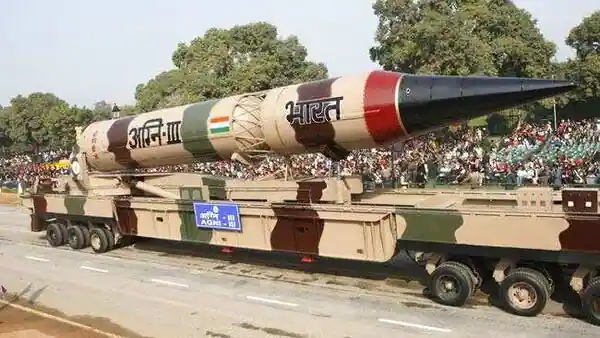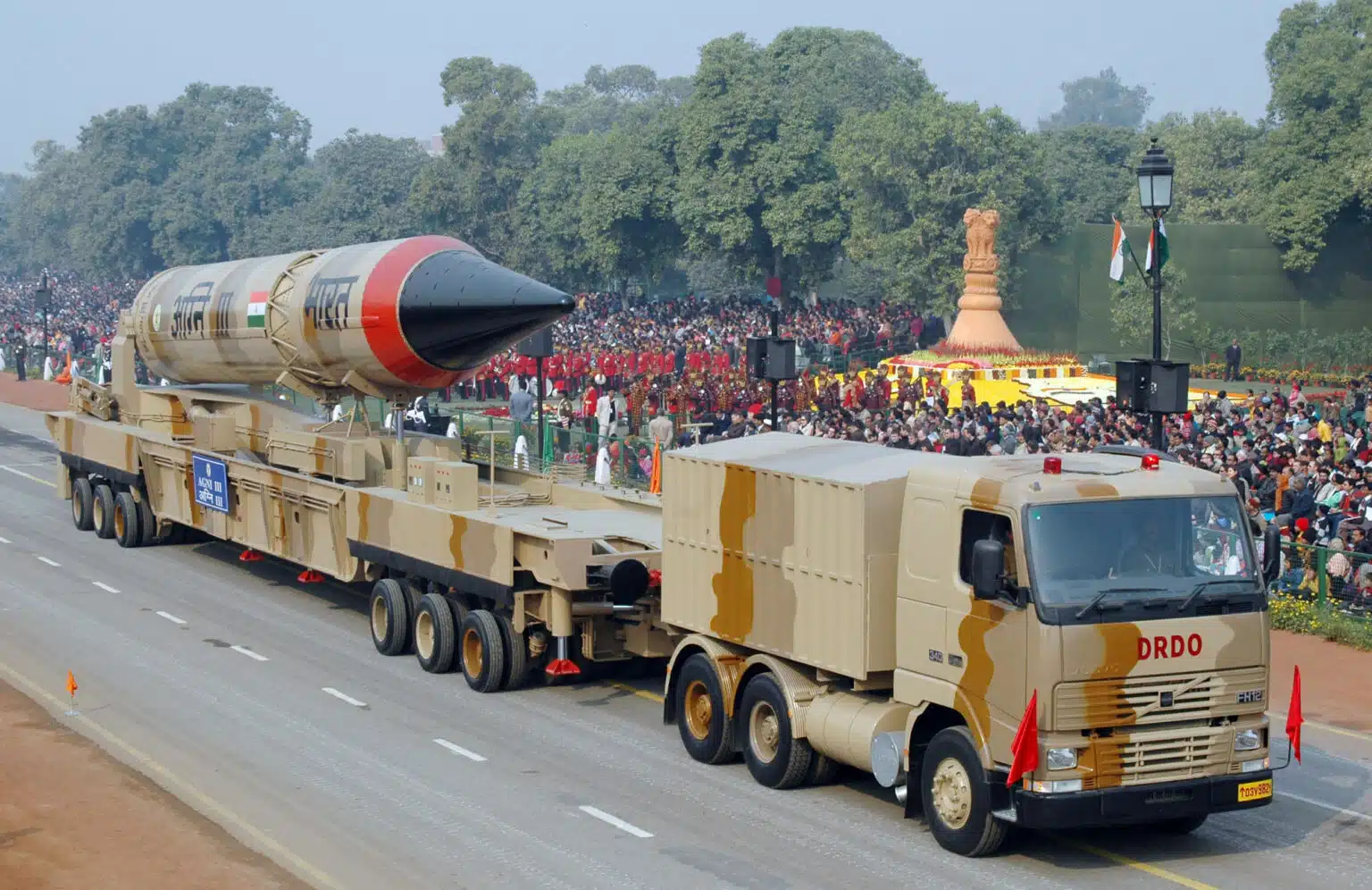India successfully carried out the training launch of the nuclear-capable Intermediate Range Ballistic Missile (IRBM) Agni-3 from APJ Abdul Kalam Island, Odisha, on Wednesday. The test was conducted as part of the Strategic Forces Command’s routine user training launches.

India successfully carried out the training launch of the nuclear-capable Intermediate Range Ballistic Missile (IRBM) Agni-3 from APJ Abdul Kalam Island, Odisha, on Wednesday. The test was conducted as part of the Strategic Forces Command’s routine user training launches.
According to a press release from the Ministry of Defence (MoD), the launch was conducted at a predefined range and tested all of the system’s operational characteristics. The 16-meter-long missile, which weighs more than 48 tonnes and can carry a payload of more than 1.5 tonnes, has a range of more than 3000 kilometers. Several radars, telemetry observation stations, electro-optic devices, and navy ships stationed at sea, according to sources, were used to track the flight path. As per the Defence Research Development Organisation (DRDO), the missile’s strike ranges between 1000 km and 2000 km.
According to the Mint, the Agni-3 missile is regarded as the most accurate strategic ballistic missile in the world for its range class because of its high range of Circular Error Probable (CEP). The warhead may be a deadly weapon for the opposition due to its high range of effectiveness in its target. The precision of the nuclear warhead also offers the chance to use less fusion fuel to deploy more nuclear force.

The Agni-3 missile, the third in the series, was tested for the first time in July 2006, however, it did not provide the desired outcome. The next month, in April 2007, it underwent a successful flight test. Since then, the system has been successfully tested several times.
Agni series of missiles
The Agni class of missiles, which also includes the Prithvi short-range ballistic missiles, submarine-launched ballistic missiles, and fighter planes, form the backbone of India’s nuclear launch capacity. Agni missiles are surface-to-surface ballistic missiles with a great range and nuclear weapons capability. Under the Integrated Guided Missile Development Program (IGMDP), the Agni-I, the first missile in the series, was created and tested in 1989.
In India’s defense budget, it was recognized as a special program and received sufficient funding for future development. The Agni series of missiles are entering service, as of November 2019.

The Agni series of missiles now includes
- Agni I: Range of 700-800 km.
- Agni II: Range more than 2000 km.
- Agni III: Range of more than 2,500 Km
- Agni IV: Range more than 3,500 km and can fire from a road-mobile launcher.
- Agni-V: The longest of the Agni series, an Inter-Continental Ballistic Missile (ICBM) with a range of over 5,000 km.
- Agni- VI: The longest of the Agni series, an Inter-Continental Ballistic Missile (ICBM) with a range of ICBM 11,000–12,000 km (Under development).
Read Also: “Offensive” Grand Canyon hiking stop renamed to honor tribe













